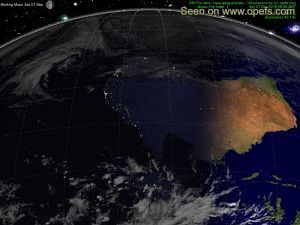
Today the news were filled with horror stories of gruesome fires in Europe. So have on the Greek island of Pellopone 15 people killed, and in Sicily, were someone keeps setting fire to the trees near the coastline, so that they can do property development there, 11 people have been killed altogether.
What I wonder about, were are the fires that are not in the news: aren't there any? The first image here is Europe, and you'll be able to find Italy and Greece. See how tiny those fires are against the fires in the Ukraine? There must be a lot of property development going on. After all, they need to play catch-up.

Now lets compare this with the fires in the rain forest, or the small fires in Africa, which are not mentioned.
If those fires in the tourist spots of Europe are terrible, how much worse must it be for those people in Brazil or Africa? My computer is counting now record numbers of active fires, at one stage approaching 30,000.
It can't be good for the climate either. Think of the millions of tons of CO² and sulphuric acid, etc. released into the atmosphere. I read someplace that a certain level of forest fires is essential for the survival of the forest. But how much is too much, and how much is necessary?

If forests globally are more or less similar, being composed of trees, and leaves and forest stuff, then it is not understandable how forests in Europe or the USA can survive so well. Because we burn our forests only very seldom, as you can see on those maps...
Earth Fire Map (updated every 3 hours).(All shown images are from today).
Rainforest loss shocks Brazil 2005Will Amazon drought worsen in '2007? ( from May '07)A rainforest in danger (Congo 2007)
 In this Meteosat image from the 30. August 2007 thick smoke can still be seen drifting southwesterly from the fires along the Italian Campania.
In this Meteosat image from the 30. August 2007 thick smoke can still be seen drifting southwesterly from the fires along the Italian Campania. After a long fight, the fires in Italy are still not under control. Yesterday the fires entered the Park of the Villa Ada in Rome, the nature preserve Park Veio and they continue to burn wild in many parts of the South.
After a long fight, the fires in Italy are still not under control. Yesterday the fires entered the Park of the Villa Ada in Rome, the nature preserve Park Veio and they continue to burn wild in many parts of the South.










 Since about 6 months I'm sitting on large webcam movies, 50 - 130mb in size. How to distribute them online in high quality (1024x768px), without incurring huge bandwidth costs?
Since about 6 months I'm sitting on large webcam movies, 50 - 130mb in size. How to distribute them online in high quality (1024x768px), without incurring huge bandwidth costs?


